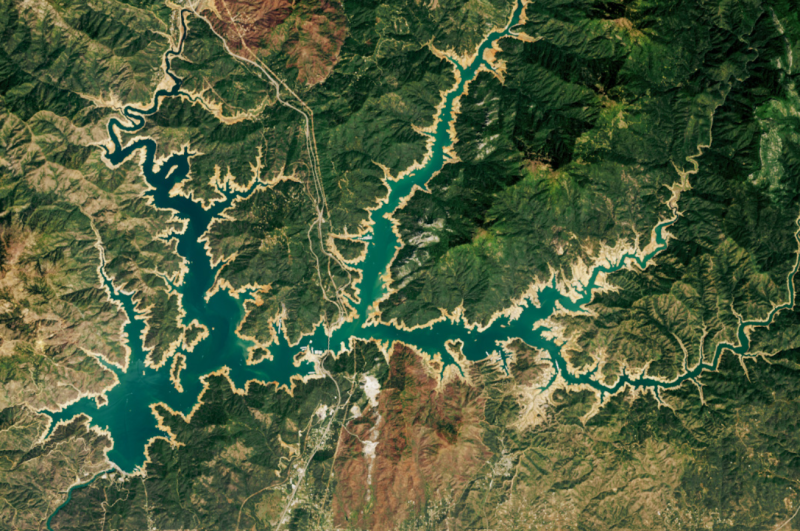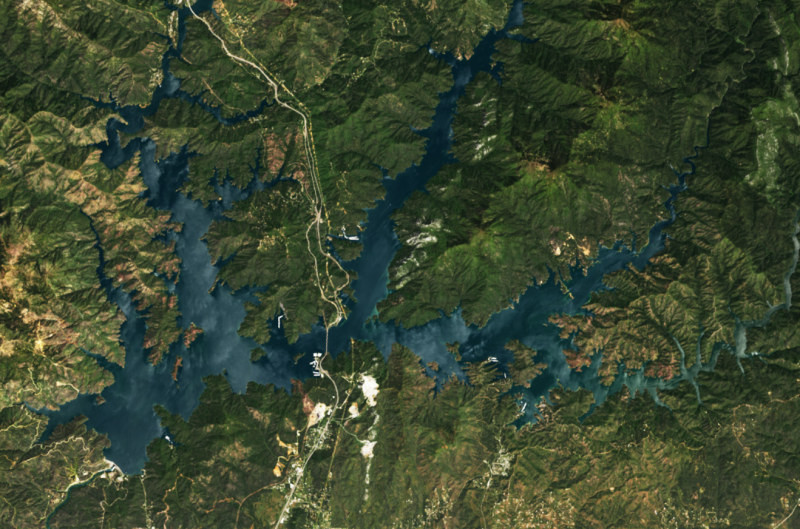Lake Shasta is completely full for the second year in a row.
Satellite images shared by the NASA Earth Observatory show how full the California reservoir is now. This is in stark contrast to in 2022, when the region was on the brink of a water crisis.
One image, captured on May 7 by the Landsat 8 satellite, shows the lake full of blue water. A comparative image captured on April 24, 2022, when the reservoir was only 39 percent, shows a very different picture. In this image, the outer edges of the lake show a "bathtub ring" indicating where water used to be. This is no longer visible in the most recent image.
In 2022, the reservoir only reached 40 percent of its entire capacity throughout the whole year.
Drag slider compare photos


Lake Shasta is California's largest reservoir. It is highly important to the state as it provides water for irrigation, municipal water supplies and more. This is why the low water levels throughout 2022 were greatly concerning. This was due to a period of prolonged drought, when precipitation was very scarce.
However, the 2023 winter period saw many storms and a record amount of rainfall. This provided the reservoir with some much needed replenishment. It eventually rose to its full capacity.
So far this year, it has been a similar story. Although the rain did not reach quite the same levels as last year, California was battered with several atmospheric rivers that meant good things for the state's water supply. Shasta's water levels began rising steadily in mid-January.
Thanks to 2023, however, the reservoir started this year already much higher than it was in the same period last year, meaning it did not take quite as much rain to replenish it to full capacity.
Lake Shasta is not the only body of water to see the benefits of the wet winters. Lake Oroville, California's second-largest reservoir has also filled up for the second year in a row. In fact, earlier this month, the reservoir was 128 percent of its average capacity, according to the Earth Observatory.
The prolonged drought conditions that lead to drought are thought to be largely down to climate change.
As global warming gets worse, weather patterns are becoming more unpredictable. This means dry conditions, paired with an over consumption of water, have run water supplies down in recent years.
Despite the recent wet winters, it remains to be seen how the state's reservoirs will fare as climate change continues to impact weather patterns.
Do you have a tip on a science story that Newsweek should be covering? Do you have a question about Lake Shasta? Let us know via science@newsweek.com.
Disclaimer: The copyright of this article belongs to the original author. Reposting this article is solely for the purpose of information dissemination and does not constitute any investment advice. If there is any infringement, please contact us immediately. We will make corrections or deletions as necessary. Thank you.



